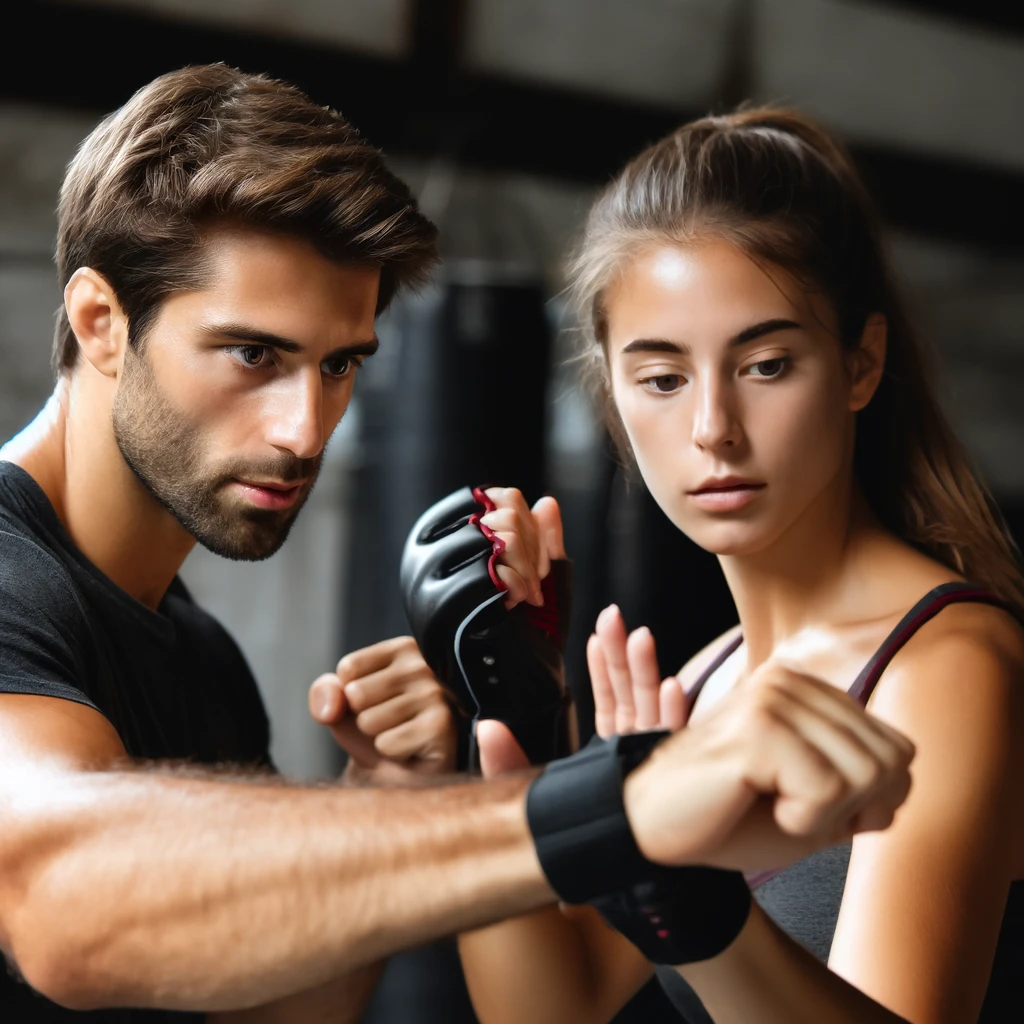MMA Classes Near Me: Your Ultimate Guide to Training (2024)
Thanks for checking out this unbiased article on MMA classes near me. If you’ve ever found yourself intrigued by the fast-paced world of Mixed Martial Arts, you’re not alone. Many people are drawn to the sport for its unique blend of techniques from various martial arts disciplines.
However, finding the right MMA class in your area can be quite the challenge, especially with so many options available.
You might be wondering, “How do I choose the best MMA gym near me?” This question can feel overwhelming, given the diverse range of gyms and training programs available.
From beginner classes to advanced training sessions, and specialized programs focusing on striking, grappling, or conditioning, it’s crucial to find a place that fits your specific needs and goals.
But don’t worry, we’ve got you covered. In this comprehensive guide, we’ll break down everything you need to know to find the perfect MMA class near you.
From researching local gyms and reading reviews to understanding what to expect in a class and how to prepare for your first session, we’ll provide all the information you need to get started on your MMA journey.
Get ready to embark on an exciting adventure into the world of Mixed Martial Arts!

What To Know Before MMA Classes Near Me?
1. What Is MMA?
The Evolution of Mixed Martial Arts
Mixed Martial Arts, commonly known as MMA, has a fascinating history that dates back thousands of years. Ancient civilizations such as the Greeks and Romans practiced forms of hand-to-hand combat, combining various fighting techniques.
However, the modern era of MMA began in the early 1990s with the creation of the Ultimate Fighting Championship (UFC).
The UFC brought together fighters from different martial arts backgrounds, showcasing their skills in a competitive environment. This led to the rapid growth and popularity of MMA as a sport.
Benefits of Practicing MMA
Practicing MMA offers numerous benefits that go beyond just physical fitness. First and foremost, it provides a full-body workout that improves strength, endurance, and flexibility.
Unlike traditional gym workouts, MMA training engages multiple muscle groups and involves dynamic movements, making it an excellent way to burn calories and build lean muscle.
Additionally, MMA training enhances mental toughness and discipline. The rigorous nature of the training requires a high level of focus, determination, and perseverance. It also teaches valuable self-defense skills, boosting confidence and providing a sense of security.
Whether you’re looking to compete or just want a challenging workout, MMA offers a unique and rewarding experience.
Finding the Best MMA Classes Near Me
Researching Local MMA Gyms
When looking for the best MMA classes near you, start by researching local gyms. A simple online search can provide a list of nearby gyms, but don’t stop there.
Visit their websites to gather information about the facilities, coaches, and training programs they offer. Look for gyms that specialize in MMA and have a strong reputation in the community.
Reading Reviews and Testimonials
Reading reviews and testimonials from current and former members can give you valuable insights into the quality of the gym. Check out online review sites, social media pages, and the gym’s website for feedback.
Pay attention to comments about the coaching staff, the atmosphere of the gym, and the effectiveness of the training programs. Positive reviews and high ratings are good indicators of a reputable gym.
Considering the Gym’s Atmosphere and Culture
The atmosphere and culture of the gym play a significant role in your training experience. Visit the gym if possible to observe a class and get a feel for the environment.
Look for a welcoming and supportive atmosphere where members respect each other and the coaches are attentive and encouraging. A positive gym culture can greatly enhance your motivation and enjoyment of MMA training.
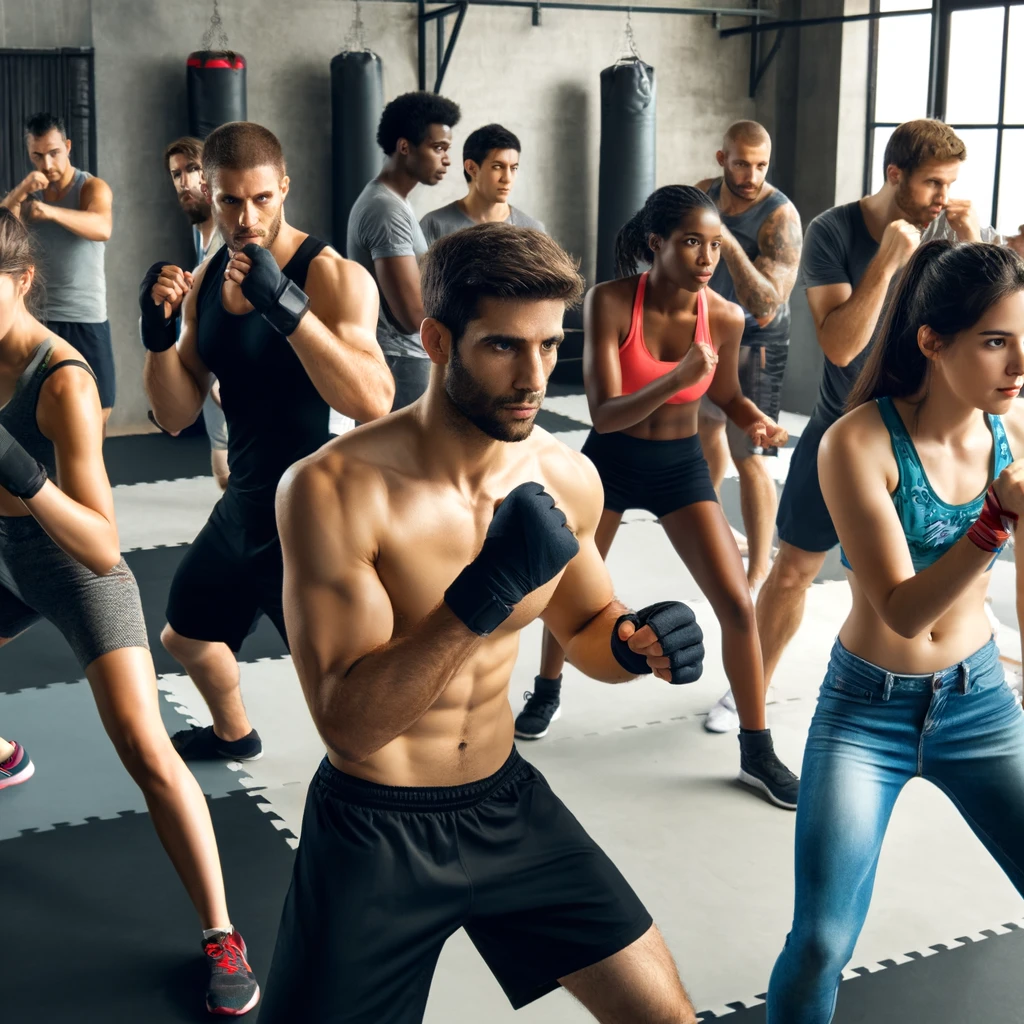
2. Types of MMA Classes Available
Beginner MMA Classes
Beginner MMA classes are designed for those who are new to the sport and want to learn the basics. These classes typically focus on fundamental techniques from various martial arts disciplines, such as Brazilian Jiu-Jitsu, Muay Thai, Boxing, and Wrestling.
Students learn proper form, stance, and basic movements, building a strong foundation for more advanced training. Beginner classes often include a mix of drilling, technique practice, and light sparring to help students get comfortable with the sport.
Advanced MMA Training
Advanced MMA training is tailored for individuals who have already mastered the basics and are looking to enhance their skills. These classes are more intense and focus on advanced techniques, combinations, and strategies.
Students engage in high-level sparring, conditioning drills, and situational training to prepare for competition. Advanced training often involves personalized coaching to address specific areas of improvement and refine techniques.
Specialized MMA Programs
Specialized MMA programs cater to specific aspects of the sport, allowing students to focus on particular skills or goals. These programs include:
Striking Techniques
Striking techniques in MMA encompass a variety of martial arts styles, including Boxing, Muay Thai, and Kickboxing. Specialized striking classes teach students how to effectively use punches, kicks, elbows, and knees.
Emphasis is placed on timing, accuracy, and combinations to outmaneuver opponents. Drills and pad work are common components of striking classes, helping students develop power and precision.
Grappling Techniques
Grappling is a crucial component of MMA, involving techniques from Brazilian Jiu-Jitsu, Wrestling, and Judo. Grappling classes focus on takedowns, submissions, and ground control.
Students learn how to transition between positions, execute submission holds, and defend against grappling attacks. Live rolling and situational drills are key parts of grappling training, providing practical experience in applying techniques.
Conditioning and Fitness
Conditioning and fitness are essential for MMA athletes to maintain peak performance. Conditioning classes incorporate a variety of exercises to improve cardiovascular endurance, strength, and agility.
These workouts often include circuit training, high-intensity interval training (HIIT), and functional fitness exercises. Conditioning programs are designed to enhance overall athleticism, helping fighters sustain energy and power throughout their matches.
Children and Youth MMA Programs
Many gyms offer MMA programs for children and youth, focusing on age-appropriate training that emphasizes safety and skill development. These classes help young participants build confidence, discipline, and physical fitness.
Youth MMA programs often include a mix of striking, grappling, and conditioning, taught in a fun and engaging environment. Parents should look for gyms with experienced instructors who have a track record of working with children.
Women’s Only MMA Classes
Women’s only MMA classes provide a supportive environment for female participants to train and develop their skills. These classes cover the same techniques and training methods as co-ed classes but are tailored to address the unique needs and concerns of women in the sport.
Women’s classes often focus on self-defense, fitness, and empowerment, encouraging participants to build strength and confidence.
Private and Semi-Private MMA Training
For those seeking personalized attention, many gyms offer private and semi-private MMA training sessions. These sessions allow students to work closely with a coach to address specific goals and areas of improvement.
Private training is ideal for individuals preparing for competition, recovering from injury, or looking to accelerate their progress. Semi-private sessions provide a small group setting, offering a balance of personalized instruction and the camaraderie of training with others.
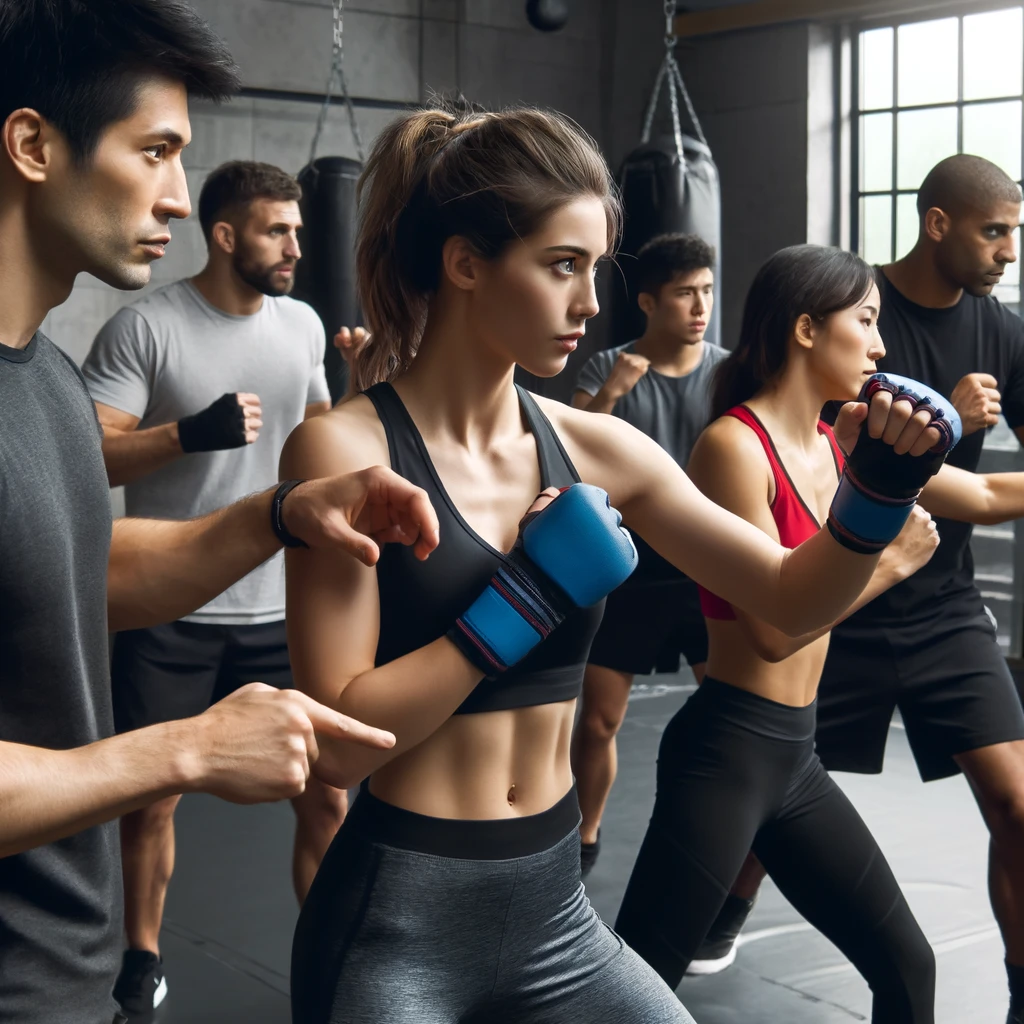
3. What to Expect in an MMA Class
Typical Class Structure
MMA classes are structured to provide a comprehensive workout that covers various aspects of the sport. A typical class usually begins with a warm-up to get the body ready for intense physical activity.
This is followed by technique drills and practice, where students learn and refine specific moves. The class often concludes with sparring or live training, allowing students to apply what they have learned in a controlled environment.
Warm-Up and Conditioning
The warm-up phase is essential for preventing injuries and preparing the body for the workout ahead. Warm-ups typically include dynamic stretching, running, shadowboxing, and other exercises that increase heart rate and flexibility.
Conditioning drills are also a key part of the warm-up, designed to improve cardiovascular endurance, strength, and agility. These drills might include jump rope, plyometrics, and bodyweight exercises such as push-ups and squats.
Technique Drills and Practice
After warming up, the focus shifts to technique drills and practice. Technique drills are designed to help students master the fundamental movements and skills of MMA. These drills can involve practicing strikes, takedowns, submissions, and defensive maneuvers.
Partner drills are common, allowing students to practice techniques in a realistic setting with a training partner. Repetition and precision are emphasized to build muscle memory and improve execution.
Striking Techniques
Striking techniques form a significant part of MMA training. Students practice punches, kicks, elbows, and knees using pads, bags, and mitts.
Instructors provide guidance on proper form, timing, and combinations. Pad work and shadowboxing are frequently used to develop speed, accuracy, and power in strikes.
Grappling Techniques
Grappling techniques are equally important in MMA. Students learn takedowns, submissions, and ground control techniques from Brazilian Jiu-Jitsu, wrestling, and Judo.
Drilling takedowns and practicing on the ground with a partner help students understand how to control and submit an opponent. Live rolling sessions allow students to apply grappling techniques in a more dynamic and competitive setting.
Sparring and Live Training
Sparring and live training are crucial components of MMA classes. Sparring sessions simulate real fight conditions, enabling students to test their skills against an opponent.
Sparring can range from light contact to full contact, depending on the class level and training objectives. Live training includes situational drills where students work on specific scenarios, such as defending against a takedown or escaping from a submission.
Safety gear and supervision by instructors ensure that sparring and live training are conducted safely.
Cool Down and Stretching
The cool down phase helps the body recover from the intense workout. Cool down exercises often include static stretching, deep breathing, and light movements to gradually lower the heart rate.
Stretching improves flexibility and reduces muscle soreness, promoting quicker recovery and preventing injuries.
Instructor Feedback and Evaluation
Receiving feedback from instructors is a vital part of the learning process in MMA. Instructors provide constructive criticism and praise, helping students understand their strengths and areas for improvement.
Regular evaluation ensures that students are progressing and mastering the techniques. Personalized feedback helps students set goals and work on specific skills.
Class Community and Camaraderie
One of the most rewarding aspects of joining an MMA class is the sense of community and camaraderie. Training with others fosters a supportive and motivating environment.
Students often form strong bonds with their training partners and coaches, encouraging each other to push their limits and achieve their goals. The positive atmosphere in MMA classes makes the training experience enjoyable and fulfilling.
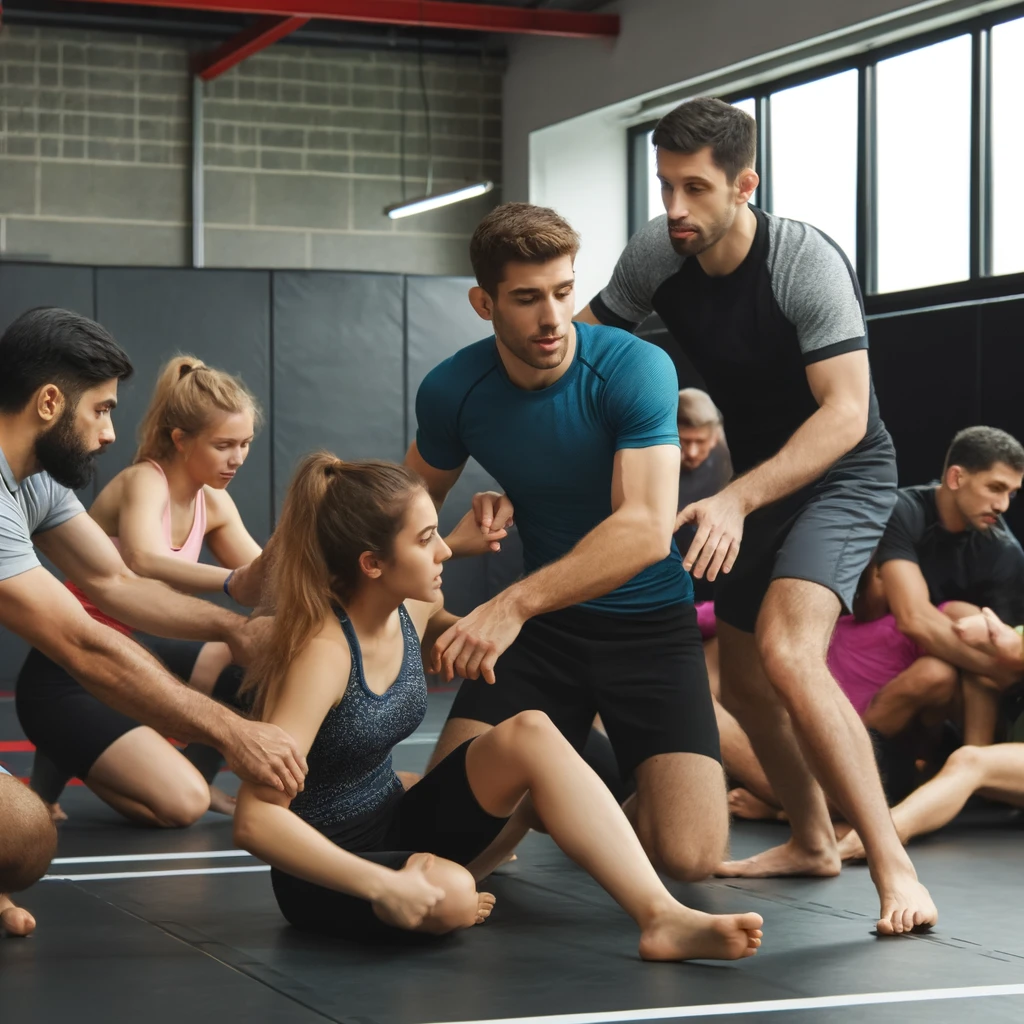
4. Choosing the Right MMA Gym for You
Evaluating Coaching Staff and Credentials
One of the most critical factors in choosing an MMA gym is the quality of the coaching staff. Experienced and knowledgeable coaches can make a significant difference in your training.
Look for coaches with credentials and backgrounds in various martial arts disciplines, such as Brazilian Jiu-Jitsu, Muay Thai, Boxing, and Wrestling.
Check their professional fighting records and any notable achievements in the sport. A good coach should also have a track record of successfully training other fighters.
Checking Class Schedules and Availability
Class schedules and availability are essential considerations when selecting an MMA gym. Ensure the gym offers classes at times that fit your schedule. Some gyms provide early morning, evening, and weekend classes to accommodate different lifestyles.
Flexible class schedules allow you to maintain consistency in your training. Also, consider the frequency of classes and whether the gym offers additional open mat times for extra practice.
Assessing Facilities and Equipment
The quality of the facilities and equipment can impact yourtraining experience. Visit the gym to check the cleanliness and maintenance of the training area. Look for a well-equipped facility with mats, punching bags, pads, and other training gear.
Adequate space for sparring and grappling is crucial to ensure a safe and productive training environment. Some gyms also offer additional amenities like locker rooms, showers, and weight training areas.
Membership Options and Pricing
Understanding the membership options and pricing is vital before committing to a gym. Many gyms offer various membership plans, including monthly, quarterly, and annual memberships.
Some gyms might provide trial classes or short-term passes for newcomers to try out the facilities before committing.
Compare the pricing and benefits of different membership plans to find one that fits your budget and training needs. Hidden fees and cancellation policies should also be considered to avoid unexpected costs.
Gym Location and Accessibility
The location of the gym plays a significant role in your commitment to regular training. Choose a gym that is conveniently located near your home or workplace. Easy accessibility can help you stay consistent with your training routine.
Consider factors like parking availability, public transport options, and traffic conditions when evaluating the gym’s location.
Community and Culture
The community and culture of the gym can greatly influence your training experience. A positive and supportive environment fosters growth and motivation. Visit the gym to observe a class and interact with the members and staff.
Look for a gym where members encourage and respect each other. A welcoming and inclusive culture can make your training journey more enjoyable and rewarding.
Trial Classes and Introductory Offers
Many gyms offer trial classes or introductory offers for new members. These trials provide an excellent opportunity to experience the training environment and evaluate if it suits your needs.
Take advantage of these offers to attend a few classes and assess the quality of instruction, facilities, and overall atmosphere. Trial classes also allow you to meet the coaches and get a feel for the gym’s culture.
Special Programs and Additional Services
Some gyms offer special programs and additional services that might enhance your training experience. These can include youth programs, women-only classes, self-defense courses, and nutrition counseling.
Special programs tailored to specific goals or demographics can provide a more customized training experience. Additional services like personal training, workshops, and seminars can also add value to your membership.
Member Testimonials and Success Stories
Member testimonials and success stories can provide valuable insights into the gym’s effectiveness and reputation. Look for testimonials on the gym’s website or social media pages.
Success stories from other members can inspire and give you confidence in the gym’s ability to help you achieve your goals. Positive feedback and visible progress in members are strong indicators of a high-quality gym.
Safety and Injury Prevention
Safety is paramount in any MMA training environment. Ensure the gym prioritizes safety protocols and injury prevention measures. Instructors should emphasize proper technique and control during drills and sparring to minimize the risk of injury.
The gym should also have first aid equipment readily available and staff trained in basic medical response. A focus on safety ensures a sustainable and injury-free training experience.
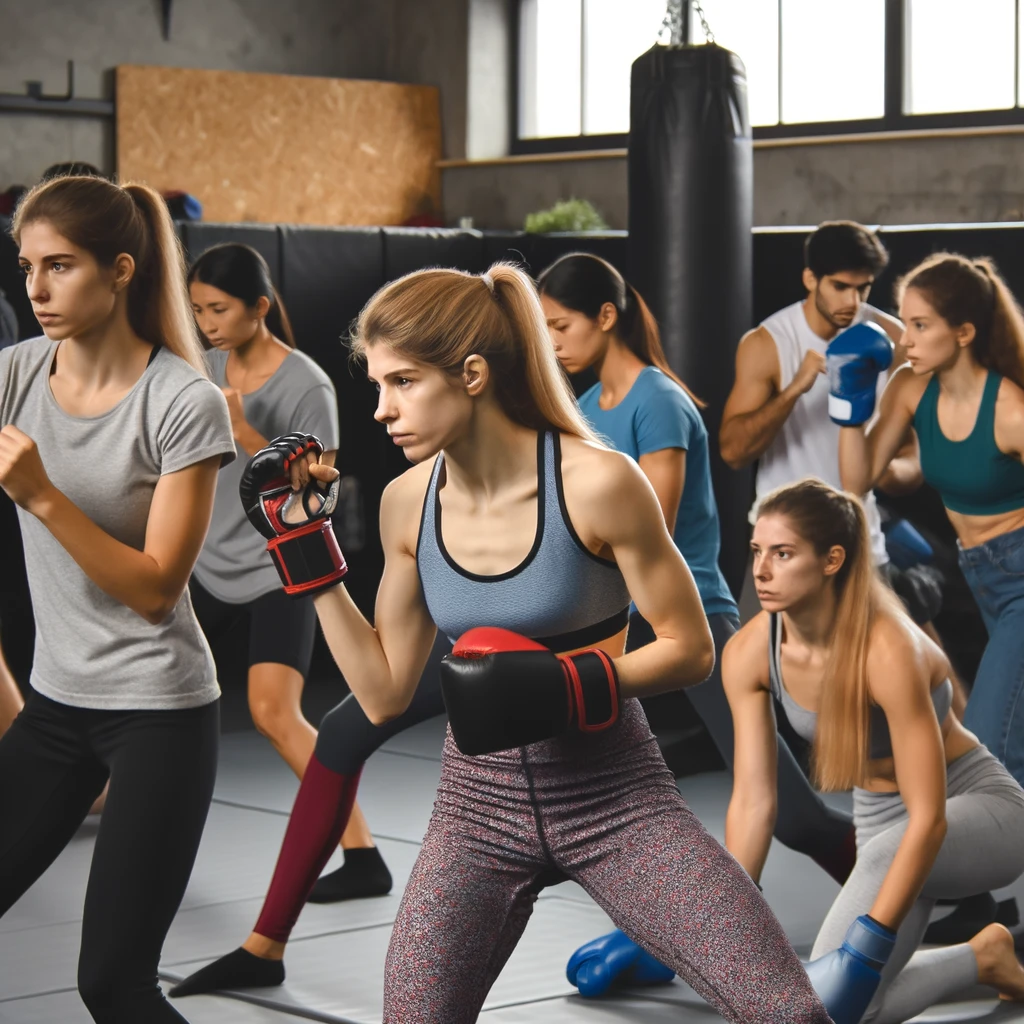
5. Preparing for Your First MMA Class
Essential Gear and Equipment
Before attending your first MMA class, it’s important to have the right gear and equipment. Essential items include:
Training Attire
Wear comfortable athletic clothing that allows for a full range of motion. Compression shorts, athletic shorts, and moisture-wicking shirts are ideal choices. Avoid clothing with zippers or buttons that can cause injuries.
Mouthguard
A mouthguard is crucial for protecting your teeth and gums during sparring and drills. Custom-fit mouthguards offer the best protection and comfort.
Hand Wraps and Gloves
Hand wraps provide support and protection for your wrists and knuckles. Boxing gloves are essential for striking practice. Some gyms may provide gloves, but having your own pair ensures a proper fit and hygiene.
Shin Guards and Headgear
Shin guards protect your legs during kicking drills and sparring. Headgear is often required for sparring sessions to reduce the risk of head injuries.
Grappling Gear
For grappling-focused classes, you’ll need a rash guard and grappling shorts. Some gyms may require a Gi (traditional martial arts uniform) for Brazilian Jiu-Jitsu classes.
Mental and Physical Preparation
Preparing mentally and physically for your first MMA class is essential to ensure a positive experience.
Mental Preparation
Approach your first class with an open mind and a positive attitude. Remember that everyone starts as a beginner. Be ready to learn, make mistakes, and improve over time. Set realistic goals for yourself and be patient with your progress.
Physical Conditioning
If you’re new to MMA or haven’t been active recently, consider starting a basic fitness routine before your first class.
Cardio exercises, strength training, and flexibility workouts can help you build a solid foundation. Proper conditioning will make the transition to MMA training smoother and reduce the risk of injuries.
Understanding Gym Etiquette
Familiarizing yourself with gym etiquette is crucial for a respectful and productive training environment.
Punctuality
Arrive on time for your class. Punctuality shows respect for the instructor and your fellow students. If you’re running late, inform the instructor in advance.
Respect for Instructors and Peers
Show respect to your instructors and training partners. Listen attentively, follow instructions, and maintain a positive attitude. Respect is a fundamental part of martial arts culture.
Hygiene
Maintain good hygiene by showering before class, keeping your gear clean, and using deodorant. Trim your nails to prevent injuries during grappling and sparring.
Communication
Communicate with your training partners during drills and sparring. Inform them of any injuries or limitations you have. During sparring, use tap-out to signal submission or when you need to stop.
Nutrition and Hydration
Proper nutrition and hydration are vital for optimal performance and recovery.
Pre-Workout Nutrition
Eat a balanced meal with protein, carbohydrates, and healthy fats a few hours before your class. Avoid heavy or greasy foods that can cause discomfort during training. Light snacks, such as fruits or protein bars, can provide a quick energy boost.
Hydration
Stay hydrated by drinking water throughout the day. Bring a water bottle to class and take sips during breaks. Dehydration can negatively impact your performance and recovery.
Managing Expectations
It’s important to manage your expectations for your first MMA class. Progress in MMA takes time and dedication. Focus on learning the basics and gradually improving your skills. Celebrate small achievements and stay committed to your training journey.
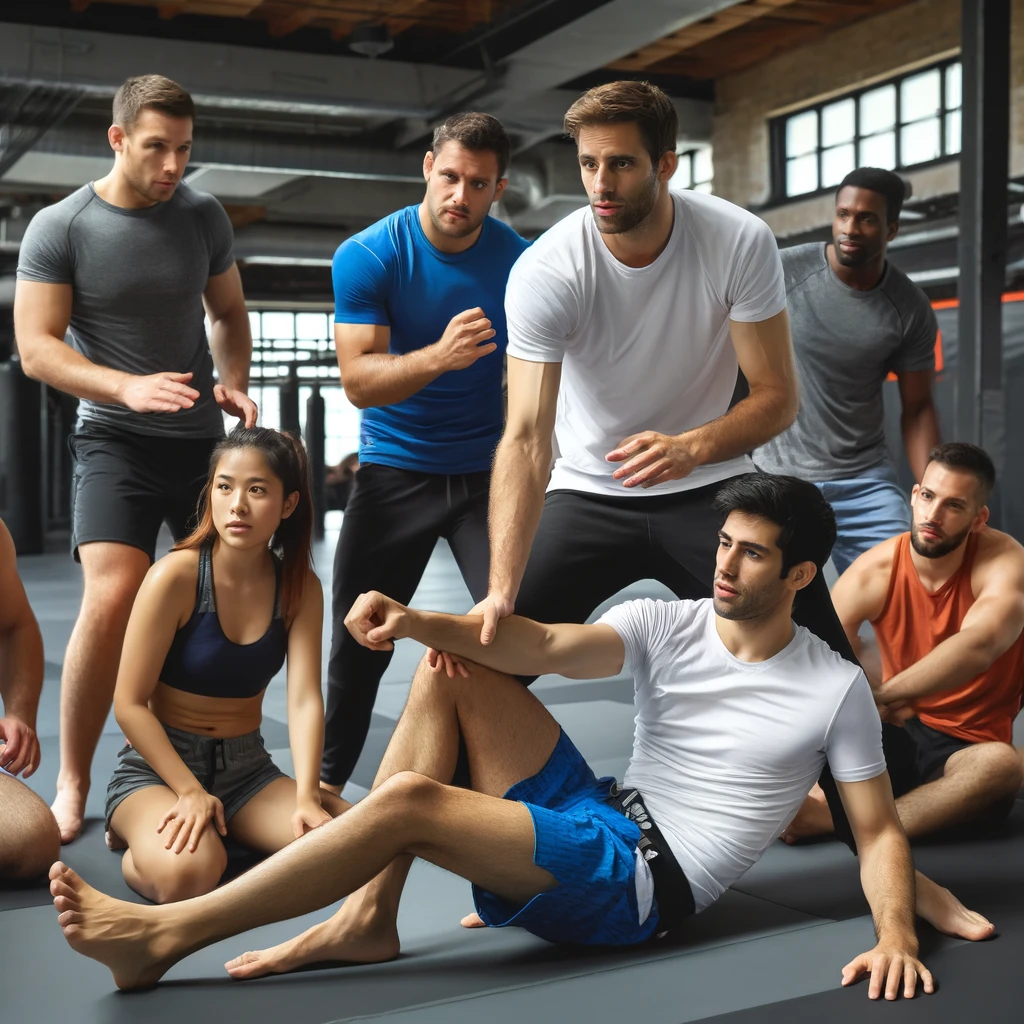
Conclusion
Thanks for checking out this article on MMA classes near me. Finding the right MMA gym can seem daunting, but with the right approach, you can find a place that meets your needs and helps you achieve your goals.
By researching local gyms, reading reviews, and evaluating the facilities and coaching staff, you’ll be well on your way to starting your MMA journey.
Remember, the key to success in MMA is consistency and dedication. Whether you’re a beginner looking to get started or an experienced fighter seeking advanced training, the right gym can provide the support and resources you need.
Stay committed to your training, embrace the challenges, and enjoy the journey as you develop your skills and improve your fitness.

Frequently Asked Questions
How does a UFC gym work?
A UFC gym operates by providing comprehensive training programs that combine martial arts classes, strength and conditioning workouts, and specialized coaching.
These gyms cater to all skill levels, from beginners to professional fighters, offering a variety of classes such as Brazilian Jiu-Jitsu (BJJ), Taekwondo, and MMA.
Members benefit from a friendly environment and guidance from great instructors dedicated to helping them achieve their fitness goals.
Are there MMA schools in New York?
Yes, there are numerous MMA schools in New York (NY), including renowned gyms in NYC, Brooklyn, and Long Island. These schools offer a range of programs, including adult martial arts classes, tailored to different skill levels and goals.
Whether you’re looking to become an MMA fighter or simply improve your fitness, you’ll find quality training options across New York.
What are the benefits of Brazilian Jiu-Jitsu (BJJ)?
Brazilian Jiu-Jitsu (BJJ) is a combat sport that focuses on ground fighting and submission techniques. Practicing BJJ improves coordination, flexibility, and mental toughness. It’s also a highly effective form of self-defense.
BJJ training provides a full-body workout, helping practitioners become the best version of themselves through hard work and discipline.
Is it necessary to have prior experience to join an MMA class?
No prior experience is necessary to join an MMA class. Most MMA schools offer beginner classes designed to teach the basics of striking, grappling, and conditioning. As you progress, you can join more advanced classes to further develop your skills.
Whether you’re new to martial arts or have some experience, there’s a place for you in MMA training.
What should I look for in a great instructor?
A great instructor should have extensive knowledge and experience in various martial arts disciplines, such as BJJ, Taekwondo, and MMA.
Look for instructors who provide clear, effective coaching and create a friendly environment that encourages growth and learning. An instructor who can tailor their approach to meet individual needs and goals is invaluable.
How often should I train to see progress in MMA?
To see progress in MMA, it’s recommended to train at least 2-3 times per week. Consistency is key, and regular training helps build endurance, strength, and technical skills.
Balancing martial arts classes with conditioning and recovery will lead to steady improvement and help prevent injuries.
Can I train MMA for fitness without competing?
Absolutely. Many people train in MMA schools for fitness and self-defense without the intention of competing.
MMA training provides a comprehensive workout that improves cardiovascular health, strength, and flexibility. It’s a great way to stay fit and healthy while learning valuable self-defense skills.
What age is suitable to start MMA training?
MMA training can start at various ages, with many gyms offering classes for children, teens, and adults.
Youth programs focus on building foundational skills and discipline, while adult martial arts classes cater to all fitness levels. Regardless of age, training in MMA can help develop physical and mental strength.
Where can I find martial arts classes in NYC?
You can find numerous martial arts classes in NYC at dedicated gyms and training centers. These classes include disciplines such as BJJ, Taekwondo, and MMA, offering programs for all skill levels.
Look for gyms with experienced instructors and a friendly environment to get the most out of your training.
How do I become the best version of myself through MMA training?
Becoming the best version of yourself through MMA training involves setting clear goals, staying consistent, and embracing the challenges of the sport.
Hard work, dedication, and a positive mindset are essential. Training in a supportive environment with skilled instructors will help you grow as a martial artist and achieve your personal and fitness goals.

